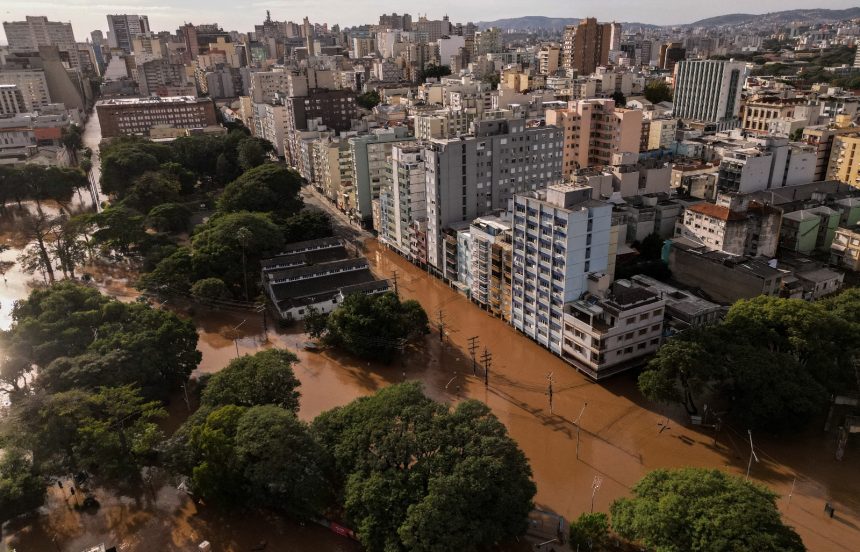Vitor Martinez, a talented 25-year-old musician and dedicated community organizer, resides in Porto Alegre, the vibrant capital of Rio Grande do Sul – the southernmost state in Brazil. Martinez’s neighborhood is situated alongside Guaíba Lake, around which the city’s main attractions are clustered. On a sunny late March day with temperatures reaching 80 degrees Fahrenheit, the promenade that encircles the lake was bustling with people biking, running, and leisurely strolling. Shoppers were seen flocking to a modern mall located on the ground floor of a newly constructed Hilton DoubleTree hotel within the neighborhood. In addition, more than 23,000 individuals from various corners of the globe gathered at a conference center near the city’s historic downtown to engage in discussions about the future prospects of technology and business in South America.
However, Martinez reflects that this picturesque scene of Porto Alegre – opulent and manicured – now only remains a distant memory. The recent torrential rains that struck southern Brazil triggered Guaíba Lake, technically a river that receives runoff from five tributaries, to overflow and inundate Porto Alegre. The resultant floodwaters submerged vast sections of the city, including its historic downtown and airport, inflicting immeasurable damage across Rio Grande do Sul. At present, over 1.45 million individuals in 417 out of 497 cities in the state have been impacted by the flooding and landslides. Nearly 100,000 homes have been destroyed or damaged, leaving 155,000 people displaced or homeless, with the death toll standing at 113 and more than 140 individuals still unaccounted for. Just as Guaíba Lake began to recede, more rainfall intensified the situation on Friday.
The catastrophe that has unfolded in Rio Grande do Sul is shaping up to be one of Brazil’s worst environmental disasters in its history. To address the crisis, Brazilian president Luiz Inácio Lula da Silva announced a significant relief and recovery package totaling 50 billion reais ($9.7 billion) for southern Brazil. This landmark investment represents the initial round of assistance to be promptly deployed.
Numerous factors have contributed to the scale of this calamity, with climate change and the El Niño weather phenomenon cited as primary causes of the severe flooding’s intensity and rapid onset. In addition, policy decisions made by local, state, and federal government entities in Brazil over the past decade have also played a role in exacerbating the devastating consequences of the flooding. The inadequate humanitarian response and limited capacity for climate change adaptation have further compounded the challenges faced by communities in Rio Grande do Sul. Experts view the flood’s monumental scale and cost as potentially heralding a shift in how climate change and environmental policies are perceived in Brazil, particularly in terms of adaptation strategies to mitigate future impacts.
The recent weather events that have besieged Brazil over the past year, including recurring large floods, serve as a poignant reminder of the climate change impacts that have been predicted for the country and South America at large. The severe weather anomalies experienced – such as unprecedented heatwaves and historic droughts – underscore the urgent need for robust climate adaptation measures to be implemented. Despite the challenges, there is hope that these environmental travails will spur a reevaluation of climate policies and lead to a more proactive stance towards climate change mitigation in Brazil.





